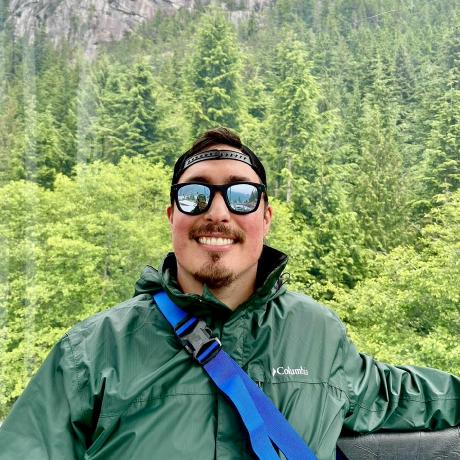Agriculture & Food
Tutorials
Blog Posts
Discussion Seminars and Webinars
Innovation Grants
Talks
-
ICLR 2020
- April 28: Agriculture, Forestry, and Other Land Use (AFOLU) Day
- Summer School 2024
- Summer School 2023
Workshop Papers
| Venue | Title |
|---|---|
| NeurIPS 2025 |
Mapping Farmed Landscapes from Remote Sensing
(Papers Track)
Abstract and authors: (click to expand)Abstract: To overcome the critical lack of detailed ecological maps needed for managing agricultural landscapes, we developed Farmscapes: the first large-scale, high-resolution map that identifies ecologically vital rural features, including often overlooked elements like hedgerows and stone walls. We achieved high accuracy in mapping key habitats with a deep learning model trained on aerial imagery and expert annotations. As a result, this work enables data-driven planning for habitat restoration, supports the monitoring of key initiatives like the EU Biodiversity Strategy, and lays a foundation for advanced analysis of landscape connectivity. Authors: Michelangelo Conserva (Google); Alex WIlson (Google); Charlotte Stanton (Google); Vishal Batchu (Google); Varun Gulshan (Google) |
| NeurIPS 2025 |
Smallholder Agricultural Landscape Understanding
(Papers Track)
Abstract and authors: (click to expand)Abstract: Comprehensive agricultural landscape understanding is critical for addressing global challenges in food security and climate change. This requires mapping not just crop fields, but also vital features like trees and water bodies which form an intricate mosaic in smallholder systems dominating the Global South. Previous efforts to develop such land use maps have been limited by a narrow focus on methods for field delineation only, and also do not develop robust post-processing steps essential for real-world deployment. This work addresses these limitations by presenting the first national-scale agricultural mapping system that moves beyond simple field delineation to provide comprehensive, multiclass segmentation of fields, trees, and water bodies, which are publicly accessible, enabling a wide range of applications and advancing global sustainability development goals. Authors: Radhika Dua (New York University); Aditi Agarwal (Google DeepMind); Alex Wilson (Google Research); Hoang Tran (Google); Nikita Saxena (Google DeepMind); Ishan Deshpande (Google DeepMind); Bogdan Floristean (Google); Neelabh Goyal (Google); Ramya Cheruvu (Google); Ujwal Singh (Google); Jitendra Jalwaniya (Google); Amandeep Kaur (Arizoana State University); Batchu Venkat Vishal (Google Research); Yan Mayster (Google); Gaurav Aggarwal (Jio Platforms Limited); Alok Talekar (Google DeepMind); Vaibhav Rajan (Google DeepMind) |
| NeurIPS 2025 |
Integrating Flood Susceptibility and Deforestation Mapping for Climate Vulnerability Assessment: A Geospatial and AI-Based Approach.
(Papers Track)
Abstract and authors: (click to expand)Abstract: Climate change has intensified global natural disasters, with floods and droughts posing the greatest threats to human settlements and economic systems. In Nigeria alone, flooding causes 80% of climate-induced deaths and inflicts catastrophic economic losses of 60 billion dollars annually, while persistent drought threatens the food security of millions in northern regions, which contribute significantly to the food consumed across the country. Despite these devastating impacts, existing machine learning disaster prediction studies focus on single hazards with limited scope and insufficient risk indicator integration, leaving communities vulnerable and unprepared. This study addresses this critical research gap by developing a comprehensive Climate Vulnerability Index (CVI) that integrates flood susceptibility and drought risk mapping across Nigeria using advanced Random Forest, XGBoost, and Light GBM algorithms with multi-criteria decision analysis. This framework represents a shift from fragmented, single-hazard approaches to a unified, multi-hazard assessment system that incorporates diverse risk indicators, creating a scalable tool essential for protecting lives and economic stability at national, state, and local levels. Authors: Serah Akojenu (Data Scientists Network); Chinazo Anebelundu (Data Scientists Network); Godwin Adegbehinde (Data Scientists Network); Olamide Shogbamu (Data Scientists Network); Blessing Agboola (Data Scientists Network); Tochuckwu Abia (Data Scientists Network); Anthony Soronnadi (Data Scientists Network) |
| NeurIPS 2025 |
Causal Effects of Winter Wheat on Soil Organic Carbon Under Climate Variability
(Papers Track)
Abstract and authors: (click to expand)Abstract: Understanding how cropping decisions influence soil organic carbon (SOC) under varying climate conditions is essential for sustainable land management. In this study, we use causal machine learning to estimate the heterogeneous effect of winter wheat-based crop rotations on SOC across 70,000 fields in Lithuania between 2018 and 2022. We quantify how temperature and precipitation influence the effectiveness of winter wheat, finding that rotations increase SOC by an average of +0.44 g/kg, but benefits are substantially lower in warmer and wetter regions. Forward-looking analyses with CMIP6 climate projections indicate that SOC gains may decline sharply under high-emission scenarios, potentially turning negative by 2100. These findings highlight the need for climate-sensitive, localized agricultural strategies and demonstrate how causal inference can inform decision-making in dynamic agroecosystems. Authors: Georgios Giannarakis (National Observatory of Athens); Vasileios Sitokonstantinou (University of Valencia); Dimitrios Bormpoudakis (National Observatory of Athens); Ilias Tsoumas (Wageningen University and Research); Nikiforos Samarinas (Aristotle University of Thessaloniki); Gustau Camps-Valls (University of Valencia); Charalmpos Kontoes (NATIONAL OBSERVATORY OF ATHENS) |
| NeurIPS 2025 |
AgriVolT: A Multi-Modal Temporal Vision Transformer for Climate-Informed Commodity Price Forecasting
(Papers Track)
Abstract and authors: (click to expand)Abstract: Climate extremes increasingly disrupt agriculture, driving volatility in staple food markets and threatening global food security. We present AgriVolT (Agriculture Volatility Transformer), a multi-modal temporal vision transformer that integrates climate reanalysis, satellite imagery, production data, and historical market prices to forecast commodity price fluctuations. AgriVolT employs temporal encodings for economic sequences, a price-focused prediction head, and cross-modal attention to capture non-linear interactions between climate shocks and market dynamics. In validation experiments on U.S. corn, soybean, and wheat markets, AgriVolT reduced mean absolute error (MAE) by 30–50% and mean absolute percentage error (MAPE) by up to 60% compared to AgriFM, a recent model we used to benchmark AgriVolT with. For example, it achieved a 37.1% MAPE for corn (vs. 74.8%) and 38.2% for wheat (vs. 98.7%). These results highlight AgriVolT’s potential to provide accurate, interpretable early warnings that help policymakers, humanitarian organizations, and farmers mitigate food insecurity in climate-volatile markets. Authors: Sharanya Roy (Algoverse); Krisha Agarwal (Algoverse); Sahir Gupta (Algoverse); Anshul Patil (Algoverse); Ahan M R (Algoverse) |
| NeurIPS 2025 |
Machine Learning Prediction of Soil Organic Carbon in Southeast Asia: Methods and Climate Implications
(Proposals Track)
Abstract and authors: (click to expand)Abstract: Soil organic carbon (SOC) is a critical indicator of soil health and a key lever for climate mitigation. Yet, SOC monitoring remains limited by costly and labor-intensive soil sampling. While machine learning (ML) methods have been applied to SOC prediction, most rely on global datasets or remote sensing proxies that overlook local management practices. This study develops ML models specifically tailored to Southeast Asia, using a harmonized dataset of 2600 field observations enriched with agricultural management metadata such as tillage, cropping systems, and fertilizer use. We compare Random Forest (RF) and XGBoost models under cross-validation, achieving strong predictive performance (R² = 0.8) while emphasizing interpretability. Beyond variable importance, we identify how management and climate factors—such as soil thickness, precipitation, and crop type—shape SOC variability under regional conditions. Unlike process-based models (e.g., RothC), our approach captures localized effects of smallholder farming practices, offering a more context-sensitive tool. The ultimate application is to inform sustainable agriculture strategies and support smallholder farmers in accessing carbon finance by quantifying SOC gains from improved practices. By combining regional data with interpretable ML, this work contributes both methodological insights and practical pathways for climate mitigation in one of the world’s most vulnerable agricultural regions. Authors: Tram Tran (Denison University) |
| NeurIPS 2025 |
From Sparse to Representative: Machine Learning to Densify IAM Scenario Ensembles for Policy Insight
(Proposals Track)
Abstract and authors: (click to expand)Abstract: This research addresses the challenge of extracting policy-relevant insights from Integrated Assessment Model (IAM) scenario ensembles, which are often sparse, non-representative, and inaccessible to non-experts. We propose a machine learning framework preserving high-dimensional dependencies between variables, enabling generation of plausible in-gap scenarios when one or more outputs are constrained. The intended output is a simplified exploration space for policymakers concerned with crucial climate policy exploration. Authors: Georgia Ray (Imperial College London) |
| NeurIPS 2025 |
Scalable Country-Level Crop Yield Modeling for Food Security and Risk Mitigation
(Proposals Track)
Abstract and authors: (click to expand)Abstract: We propose a scalable framework for generating regional crop yield predictions at the country level using coarse-resolution data, designed to support food security monitoring, policy planning, and climate adaptation. While much recent work focuses on fine-grained, field-level yield prediction, such models often require high-resolution data unavailable for many low-income countries. Our approach leverages coarser signals from satellites and household surveys, demonstrating through a Uganda proof-of-concept that machine learning models trained on regional averages can approach theoretical accuracy limits for smallholder yield prediction. We propose to extend this method by building country-specific models across all LSMS-ISA partner countries (Burkina Faso, Ethiopia, Malawi, Mali, Niger, Nigeria, Tanzania, and Uganda), and then constructing a pooled multi-country model. Comparing country-specific and multi-country models will allow us to assess generalizability in data-scarce settings. These models could provide actionable early warning signals of food shortages, enabling governments, NGOs, and international agencies to better target interventions and allocate resources under climate stress. Authors: Andrew Hobbs (University of San Francisco); Jesse Anttila-Hughes (University of San Francisco) |
| NeurIPS 2025 |
Mapping small-scale irrigation for climate adaptation
(Proposals Track)
Abstract and authors: (click to expand)Abstract: Irrigation is vital for climate resilience and food security in Sub-Saharan Africa (SSA), yet small-scale, farmer-led systems remain poorly measured, especially during the dry season when they are most common. This gap limits research and policy on water management. We created a training dataset of over 2,000 hand-labeled images across Zambia from 2016-2024, which shows that 95% of dry season irrigated fields are small-scale, accounting for one-third of irrigated land, with prevalence rising significantly over the past decade. Building on this, we will produce the first country-scale, multi-year maps of dry season irrigation in SSA by training models on Sentinel-2 time series, evaluating approaches from tree-based baselines to geospatial foundation models. These maps will fill a critical data gap for climate adaptation and water governance while providing a benchmark for geospatial AI in agricultural monitoring. Authors: Anna Boser (UCSB); Jackson Coldiron (UCSB); Karena Lai (UCSB); Madhav Rao (UCSB); Jasper Luo (UCSB); Kathy Baylis (UCSB); Tamma Carleton (UC Berkeley); Kelly Caylor (UCSB) |
| NeurIPS 2025 |
Agricultural Monitoring with Fields of The World (FTW)
(Tutorials Track)
Abstract and authors: (click to expand)Abstract: This tutorial demonstrates how to generate field boundaries globally using the Fields of The World dataset, pretrained models, and command line interface (CLI). We then show how to use those boundaries in agricultural monitoring tasks under climate change, including crop type classification and forest loss monitoring. By the end, users will be able to perform the following tasks to support climate change-related decision-making: (1) Extract agricultural field boundaries for any location, (2) Build machine learning models for crop type classification, and (3) Analyze forest loss within agricultural landscapes. By equipping users with the ability to generate field boundaries and link them to climate-relevant monitoring tasks, this tutorial lowers the barrier for researchers, practitioners, and policymakers to access and deploy advanced geospatial AI. Authors: Hannah Kerner (Arizona State University); Caleb Robinson (Microsoft); Isaac Corley (Wherobots); Matthias Mohr (Taylor Geospatial Engine); Gedeon Muhawenayo (Arizona State University); Ivan Zvonkov (University of Maryland); Tristan Grupp (World Resources Institute); Nathan Jacobs (Washington University St. Louis) |
| ICLR 2025 |
What can large language models do for sustainable food?
(Papers Track)
Abstract and authors: (click to expand)Abstract: Food systems are responsible for a third of human-caused greenhouse gas emissions. We investigate what Large Language Models (LLMs) can contribute to reducing the environmental impacts of food production. We define a typology of design and prediction tasks based on the sustainable food literature and collaboration with domain experts, and evaluate six LLMs on four tasks in our typology. For example, for a sustainable protein design task, food science experts estimated that collaboration with an LLM can reduce time spent by 45% on average, compared to 22% for collaboration with another expert human food scientist. However, for a sustainable menu design task, LLMs produce suboptimal solutions when instructed to consider both human satisfaction and climate impacts. We propose a general framework for integrating LLMs with combinatorial optimization to improve reasoning capabilities. Our approach decreases emissions of food choices by 79% in a hypothetical restaurant while maintaining participants' satisfaction with their set of choices. Our results demonstrate LLMs' potential, supported by optimization techniques, to accelerate sustainable food development and adoption. Authors: Anna Thomas (Stanford University); Adam Yee (Umai Works); Andrew Mayne (Stanford); Maya Mathur (Stanford); Dan Jurafsky (Stanford); Kristina Gligorić (Stanford) |
| ICLR 2025 |
Large Language Models for Monitoring Dataset Mentions in Climate Research
(Papers Track)
Abstract and authors: (click to expand)Abstract: Effective climate change research relies on diverse datasets to inform mitigation and adaptation strategies and policies. However, the ways these datasets are cited, used, and distributed remain poorly understood. This paper presents a machine learning framework that automates the detection and classification of dataset mentions in climate research papers. Leveraging large language models (LLMs), we generate a weakly supervised dataset through zero-shot extraction, quality assessment via an LLM-as-a-Judge, and refinement by a reasoning agent. The Phi-3.5-mini instruct model is pre-fine-tuned on this dataset, followed by fine-tuning on a smaller manually annotated subset to specialize in extracting data mentions. At inference, a ModernBERT-based classifier filters for dataset mentions, optimizing computational efficiency. Evaluated on a held-out manually annotated sample, our fine-tuned model outperforms NuExtract-v1.5 and GLiNER-large-v2.1 in dataset extraction accuracy. As a framework for monitoring dataset mentions in research papers, this approach enhances transparency, identifies data gaps, and enables researchers, funders, and policymakers to improve data discoverability and usage, leading to more informed decision-making. Authors: Aivin Solatorio (The World Bank); Rafael Macalaba (The World Bank); James Liounis (The World Bank) |
| NeurIPS 2024 |
Exploring Physics-Informed Neural Networks for Crop Yield Loss Forecasting
(Papers Track)
Abstract and authors: (click to expand)Abstract: In response to climate change, assessing crop productivity under extreme weather conditions is essential to enhance food security. Crop simulation models, which align with physical processes, offer explainability but often perform poorly. Conversely, machine learning (ML) models for crop modeling are powerful and scalable yet operate as black boxes and lack adherence to crop growth’s physical principles. To bridge this gap, we propose a novel method that combines the strengths of both approaches by estimating the water use and the crop sensitivity to water scarcity at the pixel level. This approach enables yield loss estimation grounded in physical principles by sequentially solving the equation for crop yield response to water scarcity, using an enhanced loss function. Leveraging Sentinel-2 satellite imagery, climate data, simulated water use data, and pixel-level yield data, our model demonstrates high accuracy, achieving an $R^2$ of up to 0.77—matching or surpassing state-of-the-art models like RNNs and Transformers. Additionally, it provides interpretable and physical consistent outputs, supporting industry, policymakers, and farmers in adapting to extreme weather conditions. Authors: Miro Miranda (University of Kaiserslautern-Landau); Marcela Charfuelan (German Research Center for Artificial Intelligence); Andreas Dengel (DFKI GmbH) |
| NeurIPS 2024 |
Optimizing NMR Spectroscopy Pulse Sequencing with Reinforcement Learning for Soil Atomic Abundance
(Papers Track)
Abstract and authors: (click to expand)Abstract: Determining the amount of sequestered carbon in soils and monitoring soil health in farmlands is an important climate change problem. Motivated by the lack of scalable and inexpensive techniques for in-situ soil health monitoring, we focus on low-voltage nuclear magnetic resonance (NMR) spectroscopy as a promising new approach and develop a reinforcement learning technique to modulate NMR pulses for rapid atomic abundance assessment of soils. Our preliminary results derived using Monte Carlo sampling and parallelized OpenAI Gym training show the promise of our RL-based approach. Authors: Rohan Shenoy (UC Berkeley); Hans Gaensbauer (MIT); Elsa Olivetti (MIT); Evan Coleman (MIT) |
| NeurIPS 2024 |
Towards more efficient agricultural practices via transformer-based crop type classification
(Proposals Track)
Abstract and authors: (click to expand)Abstract: Machine learning has great potential to increase crop production and resilience to climate change. Accurate maps of where crops are grown are a key input to several downstream policy and research applications. This proposal presents preliminary work showing that it is possible to accurately classify crops from time series derived from Sentinel 1 and 2 satellite imagery in Mexico using a pixel-based binary crop/non-crop time series transformer model. We also find preliminary evidence that meta-learning approaches supplemented with data from similar agro-ecological zones may improve model performance. Due to these promising results, we propose further development of this method with the goal of accurate multi-class crop classification in Jalisco, Mexico via meta-learning with a dataset comprising similar agro-ecological zones. Authors: Isabella Smythe (Columbia University); Eduardo Ulises Moya (Gobierno de Jalisco); Michael Smith (Aspia Space); Yazid Mikail (Climate Change AI); Daisy Ondwari (Kabarak University) |
| NeurIPS 2024 |
Stubble (Crop Residue) Burning Detection Through Satellite Images Using Geospatial Foundation Model: A Case Study in Punjab, India
(Proposals Track)
Abstract and authors: (click to expand)Abstract: Stubble burning is a significant environmental challenge globally, with widespread implications for air quality, greenhouse gases emission, soil degradation and health issues. This practice is particularly prevalent in agricultural regions across the world, though its impacts are notably severe in the northern India. This proposed work focuses on improving the detection of stubble (crop residue) burning in Punjab (India), through using the geospatial foundation model. This study leverages a series of satellite images where stubble burning incidents have been documented. By refining the model to incorporate local environmental factors, this study aims to improve the accuracy of stubble burning detection, thereby contributing to a scalable solution for real-time monitoring and intervention in crop residue burning practices worldwide. Authors: Rajiv Ranjan (Plaksha University); Ying-Jung Chen (Georgia Institute of Technology); Shashank Tamaskar (Plaksha University); Anupam Sobti (IIT Delhi) |
| NeurIPS 2024 |
Large language model co-pilot for transparent and trusted life cycle assessment comparisons
(Proposals Track)
Abstract and authors: (click to expand)Abstract: Intercomparing life cycle assessments (LCA), a common type of sustainability and climate model, is difficult due to basic differences in fundamental assumptions, especially in the goal and scope definition stage. This complicates decision-making and the selection of climate-smart policies, as it becomes difficult to compare optimal products and processes between different studies. To aid policymakers and LCA practitioners alike, we plan to leverage large language models (LLM) to build a database containing documented assumptions for LCAs across the agricultural sector, with a case study on livestock management. The articles for this database are identified in a systematic literature search, then processed to extract relevant assumptions about the goal and scope definition of the LCA and inserted into a vector database. We then leverage this database to develop an AI co-pilot by augmenting LLMs with retrieval augmented generation to be used by stakeholders and LCA practitioners alike. This co-pilot will accrue two major benefits: 1) enhance the decision-making process through facilitating comparisons among LCAs to enable policymakers to adopt data-driven climate policies and 2) encourage the use of common assumptions by LCA practitioners. Ultimately, we hope to create a foundational model for LCA tasks that can plug-in with existing open source LCA software and tools. Authors: Nathan Preuss (Cornell University); Fengqi You (Cornell University) |
| ICLR 2024 |
Grapevine Disease Prediction Using Climate Variables from Multi-Sensor Remote Sensing Imagery via a Transformer Model
(Papers Track)
Abstract and authors: (click to expand)Abstract: Early detection and management of grapevine diseases are important in pursuing sustainable viticulture. This paper introduces a novel framework leveraging the TabPFN model to forecast blockwise grapevine diseases using climate variables from multi-sensor remote sensing imagery. By integrating advanced machine learning techniques with detailed environmental data, our approach significantly enhances the accuracy and efficiency of disease prediction in vineyards. The TabPFN model's experimental evaluations showcase comparable performance to traditional gradient-boosted decision trees, such as XGBoost, CatBoost, and LightGBM. The model's capability to process complex data and provide per-pixel disease-affecting probabilities enables precise, targeted interventions, contributing to more sustainable disease management practices. Our findings underscore the transformative potential of combining Transformer models with remote sensing data in precision agriculture, offering a scalable solution for improving crop health and productivity while reducing environmental impact. Authors: Weiying Zhao (Deep Planet); Natalia Efremova (Queen Mary University London) |
| ICLR 2024 |
Paddy Doctor: Open Dataset and Automated Pest Identification Using Pre-trained Deep Learning Models
(Papers Track)
Abstract and authors: (click to expand)Abstract: Agriculture is one of the most important industries contributing to several countries’ national income. Timely identification of these pests is crucial for both farmers and agriculture experts to implement effective mitigation methods. Traditionally, farmers employ manual techniques based on their experience and visual inspection to identify paddy pests, but this is highly inefficient, time-consuming, and error-prone. At times, even experienced farmers and agriculture experts might struggle to identify a specific species of pests due to their size, colors similar to leaves, and the extensive variety of identical types. Moreover, farmers often apply a large quantity of pesticide without accurately identifying the exact type of pests and their underlying causes. Therefore, it is increasingly important to automate the process of detection of paddy pests to reduce pesticide usage and subsequently minimize the loss in yield. In this paper, we present an open dataset and deep learning models for automated pest identification in real paddy fields. Our dataset contains 6,062 annotated paddy leaf images across 17 classes (16 pest classes and a normal class). We benchmarked our dataset using six pre-trained models (ResNet34, VGG16, DenseNet121, EfficientNet_v2_m, MobileNet_V3_Large, and SqueezeNet1_0). The experimental results showed that ResNet34 achieved the highest accuracy of 98.31%. We release our dataset and reproducible code in the open source for community use. Authors: Petchiammal A (Manonmaniam Sundaranar University, Tirunelveli, Tamil Nadu); Pandarasamy Arjunan (Indian Institute of Science, Bangalore) |
| ICLR 2024 |
Analyzing the secondary wastewater-treatment process using Faster R-CNN and YOLOv5 object detection algorithms
(Papers Track)
Abstract and authors: (click to expand)Abstract: The activated sludge (AS) process is the most common type of secondary wastewater treatment, applied worldwide. Due to the complexity of microbial communities, imbalances between the different types of bacteria may occur and disturb the process, with pronounced economical and environmental consequences. Microscopic inspection of the morphology of flocs and microorganisms provides key information on AS properties and function. This is a time-consuming, highly skilled, and expensive process that is not readily available in all locations. Thus, most wastewater-treatment plants do not carry out this essential analysis, resulting in frequent operational faults. In this study, we develop a novel deep learning (DL) object detection algorithm to analyze and monitor the AS process based on a unique microscopic image database of flocs and microorganisms. Specifically, we applied YOLOv5 and Faster R-CNN algorithms as tools for segmentation and object detection to analyze the wastewater. The mean average precision (mAP) of the YOLOv5 was 0.67, outperforming the Faster R-CNN by 15%. Histogram equalization preprocessing of both bright-field and phase-contrast images significantly improved the results of the algorithm in all classes. In the case of YOLOv5, the mAP increased by 16.67%, to 0.77, where the AP of protozoa, filaments, and open floc classes outperformed the previous model by over 20%. These results demonstrate the potential of leveraging DL algorithms to enhance the analysis and monitoring of WWTPs in an affordable manner, consequently reducing environmental pollution caused by contaminated effluent. The fundamental challenge addressed herein has important global relevance, especially in an era in which the demand for high-quality wastewater reuse is expected to increase dramatically. Authors: Offir Inbar (Tel-Aviv University); Moni Shahar (Tel Aviv University); Jacob Gidron (Tel-Aviv University); Ido Cohen (Tel-Aviv University); Dror Avisar (Tel-Aviv University) |
| ICLR 2024 |
Verifying Practices of Regenerative Agriculture: African Smallholder Farmer Dataset for Remote Sensing and Machine Learning
(Papers Track)
Abstract and authors: (click to expand)Abstract: Despite Africa’s contribution to global greenhouse gas (GHG) emissions being only a few %, the continent experiences the harshest impacts, particularly within its food production systems. Regenerative agriculture is receiving a large amount of attention as a method to strengthen both food security and climate change resilience in Africa. For practicing regenerative agriculture, carbon credits are issued, but verifying the methodologies on a large scale is one of the challenging points in popularizing it. In this paper, we provide a comprehensive dataset on regenerative agriculture in sub-Saharan Africa. The dataset has field polygon information and is labeled with several types of regenerative agriculture methodologies. The dataset can be applied to local site analysis, classification, and detection of regenerative agriculture with remote sensing and machine learning. We also highlight several machine learning models and summarize the baseline results on our dataset. We believe that by providing this dataset, we can contribute to the establishment of verification methods for regenerative agriculture. The dataset can be downloaded from https://osf.io/xgp9m/. Authors: Yohei Nakayama (Degas Ltd); Grace Antwi (Degas Ltd); Seiko Shirasaka (Keio University) |
| ICLR 2024 |
Interpretable Machine Learning for Extreme Events detection: An application to droughts in the Po River Basin
(Papers Track)
Abstract and authors: (click to expand)Abstract: The increasing frequency and intensity of drought events-periods of significant decrease in water availability-are among the most alarming impacts of climate change. Monitoring and detecting these events is essential to mitigate their impact on our society. However, traditional drought indices often fail to accurately detect such impacts as they mostly focus on single precursors. In this study, we leverage machine learning algorithms to define a novel data-driven, impact-based drought index reproducing as target the Vegetation Health Index, a satellite signal that directly assesses the vegetation status. We first apply novel dimensionality reduction methods that allow for interpretable spatial aggregation of features related to precipitation, temperature, snow, and lakes. Then, we select the most informative and non-redundant features through filter feature selection. Finally, linear supervised learning methods are considered, given the small number of samples and the aim of preserving interpretability. The experimental setting focuses on ten sub-basins of the Po River basin, but the aim is to design a machine learning-based workflow applicable on a large scale. Authors: Paolo Bonetti (Politecnico di Milano); Matteo Giuliani (Politecnico di Milano); Veronica Cardigliano (Politecnico di Milano); Alberto Maria Metelli (Politecnico di Milano); Marcello Restelli (Politecnico di Milano); Andrea Castelletti (Politecnico di Milano) |
| NeurIPS 2023 |
Interpretable machine learning approach to understand U.S. prevented planting events and project climate change impacts
(Papers Track)
Abstract and authors: (click to expand)Abstract: Extreme weather events in 2019 prevented U.S. farmers from planting crop on a record 19.4 million acres, more than double the previous record. Insurance reports show the majority of these were intended to be corn acres and prevented due to excess soil moisture and precipitation. However, we still lack a detailed understanding of how weather and soil conditions lead to prevented planting, as well as how climate change may impact future outcomes. Machine learning provides a promising approach to this challenge. Here, we model the drivers of prevented corn planting using soil characteristics, monthly weather conditions, and geospatial information. Due to the extreme nature of events causing prevented planting, we use a novel-design zero-inflated regression (ZIR) model that predicts the occurrence of prevented planting as well as the potential severity. We identify key environmental drivers of prevented planting, including May rainfall and soil drainage class. Under climate change scenarios, the model interestingly projects future instances of prevented planting to be less frequent but more severe relative to the historical period. Authors: Haynes Stephens (University of Chicago) |
| NeurIPS 2023 |
Breeding Programs Optimization with Reinforcement Learning
(Papers Track)
Abstract and authors: (click to expand)Abstract: Crop breeding is crucial in improving agricultural productivity while potentially decreasing land usage, greenhouse gas emissions, and water consumption. However, breeding programs are challenging due to long turnover times, high-dimensional decision spaces, long-term objectives, and the need to adapt to rapid climate change. This paper introduces the use of Reinforcement Learning (RL) to optimize simulated crop breeding programs. RL agents are trained to make optimal crop selection and cross-breeding decisions based on genetic information. To benchmark RL-based breeding algorithms, we introduce a suite of Gym environments. The study demonstrates the superiority of RL techniques over standard practices in terms of genetic gain when simulated in silico using real-world genomic maize data. Authors: Omar G. Younis (ETH Zurich); Luca Corinzia (ETH Zurich - Information Science & Engineering Group); Ioannis N Athanasiadis (Wageningen University and Research); Andreas Krause (ETH Zürich); Joachim Buhmann (ETH Zurich); Matteo Turchetta (ETH Zurich) |
| NeurIPS 2023 |
Causality and Explainability for Trustworthy Integrated Pest Management
(Proposals Track)
Abstract and authors: (click to expand)Abstract: Pesticides, widely used in agriculture for pest control, contribute to the climate crisis. Integrated pest management (IPM) is preferred as a climate-smart alternative. However, low adoption rates of IPM are observed due to farmers' skepticism about its effectiveness, so we introduce an enhancing data analysis framework for IPM to combat that. Our framework provides i) robust pest population predictions across diverse environments with invariant and causal learning, ii) interpretable pest presence predictions using transparent models, iii) actionable advice through counterfactual explanations for in-season IPM interventions, iv) field-specific treatment effect estimations, and v) causal inference to assess advice effectiveness. Authors: Ilias Tsoumas (National Observatory of Athens); Vasileios Sitokonstantinou (University of Valencia); Georgios Giannarakis (National Observatory of Athens); Evagelia Lampiri (University of Thessaly); Christos Athanassiou (University of Thessaly); Gustau Camps-Valls (Universitat de València); Charalampos Kontoes (National Observatory of Athens); Ioannis N Athanasiadis (Wageningen University and Research) |
| ICLR 2023 |
Robustly modeling the nonlinear impact of climate change on agriculture by combining econometrics and machine learning
(Proposals Track)
Abstract and authors: (click to expand)Abstract: Climate change is expected to have a dramatic impact on agricultural production; however, due to natural complexity, the exact avenues and relative strengths by which this will happen are still unknown. The development of accurate forecasting models is thus of great importance to enable policy makers to design effective interventions. To date, most machine learning methods aimed at tackling this problem lack a consideration of causal structure, thereby making them unreliable for the types of counterfactual analysis necessary when making policy decisions. Econometrics has developed robust techniques for estimating cause-effect relations in time-series, specifically through the use of cointegration analysis and Granger causality. However, these methods are frequently limited in flexibility, especially in the estimation of nonlinear relationships. In this work, we propose to integrate the non-linear function approximators with the robust causal estimation methods to ultimately develop an accurate agricultural forecasting model capable of robust counterfactual analysis. This method would be a valuable new asset for government and industrial stakeholders to understand how climate change impacts agricultural production. Authors: Benedetta Francesconi (Independent Researcher); Ying-Jung C Deweese (Descartes Labs / Georgia Insititute of Technology) |
| NeurIPS 2022 |
AutoML-based Almond Yield Prediction and Projection in California
(Papers Track)
Abstract and authors: (click to expand)Abstract: Almonds are one of the most lucrative products of California, but are also among the most sensitive to climate change. In order to better understand the relationship between climatic factors and almond yield, an automated machine learning framework is used to build a collection of machine learning models. The prediction skill is assessed using historical records. Future projections are derived using 17 downscaled climate outputs. The ensemble mean projection displays almond yield changes under two different climate scenarios, along with two technology development scenarios, where the role of technology development is highlighted. The mean projections and distributions provide insightful results to stakeholders and can be utilized by policymakers for climate adaptation. Authors: Shiheng Duan (Lawrence Livermore National Laboratory); Shuaiqi Wu (University of California, Davis); Erwan Monier (University of California, Davis); Paul Ullrich (University of California, Davis) |
| NeurIPS 2022 |
Scene-to-Patch Earth Observation: Multiple Instance Learning for Land Cover Classification
(Papers Track)
Abstract and authors: (click to expand)Abstract: Land cover classification (LCC), and monitoring how land use changes over time, is an important process in climate change mitigation and adaptation. Existing approaches that use machine learning with Earth observation data for LCC rely on fully-annotated and segmented datasets. Creating these datasets requires a large amount of effort, and a lack of suitable datasets has become an obstacle in scaling the use of LCC. In this study, we propose Scene-to-Patch models: an alternative LCC approach utilising Multiple Instance Learning (MIL) that requires only high-level scene labels. This enables much faster development of new datasets whilst still providing segmentation through patch-level predictions, ultimately increasing the accessibility of using LCC for different scenarios. On the DeepGlobe-LCC dataset, our approach outperforms non-MIL baselines on both scene- and patch-level prediction. This work provides the foundation for expanding the use of LCC in climate change mitigation methods for technology, government, and academia. Authors: Joseph Early (University of Southampton); Ying-Jung C Deweese (Georgia Insititute of Technology); Christine Evers (University of Southampton); Sarvapali Ramchurn (University of Southampton) |
| NeurIPS 2022 |
Causal Modeling of Soil Processes for Improved Generalization
(Papers Track)
Abstract and authors: (click to expand)Abstract: Measuring and monitoring soil organic carbon is critical for agricultural productivity and for addressing critical environmental problems. Soil organic carbon not only enriches nutrition in soil, but also has a gamut of co-benefits such as improving water storage and limiting physical erosion. Despite a litany of work in soil organic carbon estimation, current approaches do not generalize well across soil conditions and management practices. We empirically show that explicit modeling of cause-and-effect relationships among the soil processes improves the out-of-distribution generalizability of prediction models. We provide a comparative analysis of soil organic carbon estimation models where the skeleton is estimated using causal discovery methods. Our framework provide an average improvement of 81% in test mean squared error and 52% in test mean absolute error. Authors: Somya Sharma (U. Minnesota); Swati Sharma (Microsoft Research); Emre Kiciman (Microsoft Research); Andy Neal (Rothamstead); Ranveer Chandra (Microsoft Research); John Crawford (University of Glasgow); Sara Malvar (Microsoft); Eduardo R Rodrigues (MSR) |
| NeurIPS 2022 |
Towards Global Crop Maps with Transfer Learning
(Papers Track)
Abstract and authors: (click to expand)Abstract: The continuous increase in global population and the impact of climate change on crop production are expected to affect the food sector significantly. In this context, there is need for timely, large-scale and precise mapping of crops for evidence-based decision making. A key enabler towards this direction are new satellite missions that freely offer big remote sensing data of high spatio-temporal resolution and global coverage. During the previous decade and because of this surge of big Earth observations, deep learning methods have dominated the remote sensing and crop mapping literature. Nevertheless, deep learning models require large amounts of annotated data that are scarce and hard-to-acquire. To address this problem, transfer learning methods can be used to exploit available annotations and enable crop mapping for other regions, crop types and years of inspection. In this work, we have developed and trained a deep learning model for paddy rice detection in South Korea using Sentinel-1 VH time-series. We then fine-tune the model for i) paddy rice detection in France and Spain and ii) barley detection in the Netherlands. Additionally, we propose a modification in the pre-trained weights in order to incorporate extra input features (Sentinel-1 VV). Our approach shows excellent performance when transferring in different areas for the same crop type and rather promising results when transferring in a different area and crop type. Authors: Hyun-Woo Jo (Korea University); Alkiviadis Marios Koukos (National Observatory of Athens); Vasileios Sitokonstantinou (National Observatory of Athens); Woo-Kyun Lee (Korea University); Charalampos Kontoes (National Observatory of Athens) |
| NeurIPS 2022 |
Evaluating Digital Tools for Sustainable Agriculture using Causal Inference
(Papers Track)
Abstract and authors: (click to expand)Abstract: In contrast to the rapid digitalization of several industries, agriculture suffers from low adoption of climate-smart farming tools. Even though AI-driven digital agriculture can offer high-performing predictive functionalities, they lack tangible quantitative evidence on their benefits to the farmers. Field experiments can derive such evidence, but are often costly and time consuming. To this end, we propose an observational causal inference framework for the empirical evaluation of the impact of digital tools on target farm performance indicators. This way, we can increase farmers' trust via enhancing the transparency of the digital agriculture market, and in turn accelerate the adoption of technologies that aim to increase productivity and secure a sustainable and resilient agriculture against a changing climate. As a case study, we perform an empirical evaluation of a recommendation system for optimal cotton sowing, which was used by a farmers' cooperative during the growing season of 2021. We leverage agricultural knowledge to develop the causal graph of the farm system, we use the back-door criterion to identify the impact of recommendations on the yield and subsequently we estimate it using several methods on observational data. The results showed that a field sown according to our recommendations enjoyed a significant increase in yield 12% to 17%. Authors: Ilias Tsoumas (National Observatory of Athens); Georgios Giannarakis (National Observatory of Athens); Vasileios Sitokonstantinou (National Observatory of Athens); Alkiviadis Marios Koukos (National Observatory of Athens); Dimitra A Loka (Hellenic Agricultural Organization ELGO DIMITRA); Nikolaos S Bartsotas (National Observatory of Athens); Charalampos Kontoes (National Observatory of Athens); Ioannis N Athanasiadis (Wageningen University and Research) |
| NeurIPS 2022 |
Learning to forecast vegetation greenness at fine resolution over Africa with ConvLSTMs
(Papers Track)
Abstract and authors: (click to expand)Abstract: Forecasting the state of vegetation in response to climate and weather events is a major challenge. Its implementation will prove crucial in predicting crop yield, forest damage, or more generally the impact on ecosystems services relevant for socio-economic functioning, which if absent can lead to humanitarian disasters. Vegetation status depends on weather and environmental conditions that modulate complex ecological processes taking place at several timescales. Interactions between vegetation and different environmental drivers express responses at instantaneous but also time-lagged effects, often showing an emerging spatial context at landscape and regional scales. We formulate the land surface forecasting task as a strongly guided video prediction task where the objective is to forecast the vegetation developing at very fine resolution using topography and weather variables to guide the prediction. We use a Convolutional LSTM (ConvLSTM) architecture to address this task and predict changes in the vegetation state in Africa using Sentinel-2 satellite NDVI, having ERA5 weather reanalysis, SMAP satellite measurements, and topography (DEM of SRTMv4.1) as variables to guide the prediction. Ours results highlight how ConvLSTM models can not only forecast the seasonal evolution of NDVI at high resolution, but also the differential impacts of weather anomalies over the baselines. The model is able to predict different vegetation types, even those with very high NDVI variability during target length. Authors: Claire Robin (Biogeochemical Integration, Max-Planck-Institute for Biogeochemistry, Jena, Germany); Christian Requena-Mesa (Computer Vision Group, Friedrich Schiller University Jena; DLR Institute of Data Science, Jena; Max Planck Institute for Biogeochemistry, Jena); Vitus Benson (Max-Planck-Institute for Biogeochemistry); Jeran Poehls (Max-Planck-Institute for Biogeochemistry); Lazaro Alonzo (Max-Planck-Institute for Biogeochemistry Max-Planck-Institute for Biogeochemistry); Nuno Carvalhais (Max-Planck-Institute for Biogeochemistry); Markus Reichstein (Max Planck Institute for Biogeochemistry, Jena; Michael Stifel Center Jena for Data-Driven and Simulation Science, Jena) |
| NeurIPS 2022 |
Forecasting Global Drought Severity and Duration Using Deep Learning
(Proposals Track)
Abstract and authors: (click to expand)Abstract: Drought detection and prediction is challenging due to the slow onset of the event and varying degrees of dependence on numerous physical and socio-economic factors that differentiate droughts from other natural disasters. In this work, we propose DeepXD (Deep learning for Droughts), a deep learning model with 26 physics-informed input features for SPI (Standardised Precipitation Index) forecasting to identify and classify droughts using monthly oceanic indices, global meteorological and vegetation data, location (latitude, longitude) and land cover for the years 1982 to 2018. In our work, we propose extracting features by considering the atmosphere and land moisture and energy budgets and forecasting global droughts on a seasonal and an annual scale at 1, 3, 6, 9, 12 and 24 months lead times. SPI helps us to identify the severity and the duration of the drought to classify them as meteorological, agricultural and hydrological. Authors: Akanksha Ahuja (NOA); Xin Rong Chua (Centre for Climate Research Singapore) |
| NeurIPS 2022 |
Personalizing Sustainable Agriculture with Causal Machine Learning
(Proposals Track)
Best Paper: Proposals
Abstract and authors: (click to expand)Abstract: To fight climate change and accommodate the increasing population, global crop production has to be strengthened. To achieve the "sustainable intensification" of agriculture, transforming it from carbon emitter to carbon sink is a priority, and understanding the environmental impact of agricultural management practices is a fundamental prerequisite to that. At the same time, the global agricultural landscape is deeply heterogeneous, with differences in climate, soil, and land use inducing variations in how agricultural systems respond to farmer actions. The "personalization" of sustainable agriculture with the provision of locally adapted management advice is thus a necessary condition for the efficient uplift of green metrics, and an integral development in imminent policies. Here, we formulate personalized sustainable agriculture as a Conditional Average Treatment Effect estimation task and use Causal Machine Learning for tackling it. Leveraging climate data, land use information and employing Double Machine Learning, we estimate the heterogeneous effect of sustainable practices on the field-level Soil Organic Carbon content in Lithuania. We thus provide a data-driven perspective for targeting sustainable practices and effectively expanding the global carbon sink. Authors: Georgios Giannarakis (National Observatory of Athens); Vasileios Sitokonstantinou (National Observatory of Athens); Roxanne Suzette Lorilla (National Observatory of Athens); Charalampos Kontoes (National Observatory of Athens) |
| AAAI FSS 2022 |
AI-Based Text Analysis for Evaluating Food Waste Policies
Abstract and authors: (click to expand)Abstract: Food waste is a major contributor to climate change, making the reduction of food waste one of the most important strategies to preserve threatened ecosystems and increase economic benefits. To evaluate the impact of food waste policies in this arena and provide actionable guidance to policymakers, we conducted an AI-based text analysis of food waste policy provisions. Specifically, we a) identified commonalities across state policy texts, b) clustered states by shared policy text, and c) examined relationships between state cluster memberships and food waste . This approach generated state clusters but demonstrated very limited convergent validity with policy ratings provided by subject matter experts and no predictive validity with food waste. We discuss the potential of using supervised machine learning to analyze food waste policy text as a next step. Authors: John Aitken (The MITRE Corporation), Denali Rao (The MITRE Corporation), Balca Alaybek (The MITRE Corporation), Amber Sprenger (The MITRE Corporation), Grace Mika (The MITRE Corporation), Rob Hartman (The MITRE Corporation) and Laura Leets (The MITRE Corporation) |
| NeurIPS 2021 |
On the Generalization of Agricultural Drought Classification from Climate Data
(Papers Track)
Abstract and authors: (click to expand)Abstract: Climate change is expected to increase the likelihood of drought events, with severe implications for food security. Unlike other natural disasters, droughts have a slow onset and depend on various external factors, making drought detection in climate data difficult. In contrast to existing works that rely on simple relative drought indices as ground-truth data, we build upon soil moisture index (SMI) obtained from a hydrological model. This index is directly related to insufficiently available water to vegetation. Given ERA5-Land climate input data of six months with land use information from MODIS satellite observation, we compare different models with and without sequential inductive bias in classifying droughts based on SMI. We use PR-AUC as the evaluation measure to account for the class imbalance and obtain promising results despite a challenging time-based split. We further show in an ablation study that the models retain their predictive capabilities given input data of coarser resolutions, as frequently encountered in climate models. Authors: Julia Gottfriedsen (1Deutsches Zentrum für Luft- und Raumfahrt (DLR), LMU); Max Berrendorf (Ludwig-Maximilians-Universität München); Pierre Gentine (Columbia University); Markus Reichstein (Max Planck Institute for Biogeochemistry, Jena; Michael Stifel Center Jena for Data-Driven and Simulation Science, Jena); Katja Weigel (niversity of Bremen, Institute of Environmental Physics (IUP), Bremen, Germany); Birgit Hassler (Deutsches Zentrum für Luft- und Raumfahrt e.V. (DLR), Institut für Physik der Atmosphäre, Oberpfaffenhofen, Germany); Veronika Eyring (Deutsches Zentrum für Luft- und Raumfahrt e.V. (DLR), Institut für Physik der Atmosphäre, Oberpfaffenhofen, Germany; University of Bremen, Institute of Environmental Physics (IUP), Bremen, Germany) |
| NeurIPS 2021 |
National Cropland Classification with Agriculture Census Information and EO Datasets
(Papers Track)
Abstract and authors: (click to expand)Abstract: National cropland classification is critical to monitor food security, comprehend environmental circumstances and climate change, and participate in agricultural policy development. The increasing earth observation datasets, especially the free available Sentinel and Landsat, open unprecedented large-scale mapping opportunities. However, most applied machine learning techniques have relied on substantial training datasets, which are not always available and may be expensive to create or collect. Focusing on Japan, this work indicates what kinds of information can be extracted from agriculture census information then used for mapping different crop types. Different classification approaches of pixel-based and parcel-based are compared. Then, the efficient method is used to generate Japan's first national cropland classification with Sentinel-1 C-band and Landsat-8 time series. For 2015, the overall accuracies for the prefectures range between 71\% and 94\%. This national cropland classification map, which particularly succeeds in extracting high-precision rice products for the whole of Japan and other classes for different prefectures, can be treated as the base map of Japan for future studies related to agriculture, environment, and climate change. Authors: Junshi Xia (RIKEN); Naoto Yokoya (The University of Tokyo); Bruno Adriano (RIKEN Center for Advanced Intelligence Project (AIP)) |
| NeurIPS 2021 |
A GNN-RNN Approach for Harnessing Geospatial and Temporal Information: Application to Crop Yield Prediction
(Papers Track)
Best Paper: ML Innovation
Abstract and authors: (click to expand)Abstract: Climate change poses new challenges to agricultural production, as crop yields are extremely sensitive to climatic variation. Accurately predicting the effects of weather patterns on crop yield is crucial for addressing issues such as food insecurity, supply stability, and economic planning. Recently, there have been many attempts to use machine learning models for crop yield prediction. However, these models either restrict their tasks to a relatively small region or a short time-period (e.g. a few years), which makes them hard to generalize spatially and temporally. They also view each location as an i.i.d sample, ignoring spatial correlations in the data. In this paper, we introduce a novel graph-based recurrent neural network for crop yield prediction, which incorporates both geographical and temporal structure. Our method is trained, validated, and tested on over 2000 counties from 41 states in the US mainland, covering years from 1981 to 2019. As far as we know, this is the first machine learning method that embeds geographical knowledge in crop yield prediction and predicts crop yields at the county level nationwide. Experimental results show that our proposed method consistently outperforms a wide variety of existing state-of-the-art methods, validating the effectiveness of geospatial and temporal information. Authors: Joshua Fan (Cornell University); Junwen Bai (Cornell University); Zhiyun Li (Cornell University); Ariel Ortiz-Bobea (Cornell); Carla P Gomes (Cornell University) |
| NeurIPS 2021 |
Resolving Super Fine-Resolution SIF via Coarsely-Supervised U-Net Regression
(Papers Track)
Abstract and authors: (click to expand)Abstract: Climate change presents challenges to crop productivity, such as increasing the likelihood of heat stress and drought. Solar-Induced Chlorophyll Fluorescence (SIF) is a powerful way to monitor how crop productivity and photosynthesis are affected by changing climatic conditions. However, satellite SIF observations are only available at a coarse spatial resolution (e.g. 3-5km) in most places, making it difficult to determine how individual crop types or farms are doing. This poses a challenging coarsely-supervised regression task; at training time, we only have access to SIF labels at a coarse resolution (3 km), yet we want to predict SIF at a very fine spatial resolution (30 meters), a 100x increase. We do have some fine-resolution input features (such as Landsat reflectance) that are correlated with SIF, but the nature of the correlation is unknown. To address this, we propose Coarsely-Supervised Regression U-Net (CSR-U-Net), a novel approach to train a U-Net for this coarse supervision setting. CSR-U-Net takes in a fine-resolution input image, and outputs a SIF prediction for each pixel; the average of the pixel predictions is trained to equal the true coarse-resolution SIF for the entire image. Even though this is a very weak form of supervision, CSR-U-Net can still learn to predict accurately, due to its inherent localization abilities, plus additional enhancements that facilitate the incorporation of scientific prior knowledge. CSR-U-Net can resolve fine-grained variations in SIF more accurately than existing averaging-based approaches, which ignore fine-resolution spatial variation during training. CSR-U-Net could also be useful for a wide range of "downscaling'" problems in climate science, such as increasing the resolution of global climate models. Authors: Joshua Fan (Cornell University); Di Chen (Cornell University); Jiaming Wen (Cornell University); Ying Sun (Cornell University); Carla P Gomes (Cornell University) |
| NeurIPS 2021 |
Machine Learning Speeding Up the Development of Portfolio of New Crop Varieties to Adapt to and Mitigate Climate Change
(Proposals Track)
Abstract and authors: (click to expand)Abstract: Climate change poses serious challenges to achieving food security in a time of a need to produce more food to keep up with the world’s increasing demand for food. There is an urgent need to speed up the development of new high yielding varieties with traits of adaptation and mitigation to climate change. Mathematical approaches, including ML approaches, have been used to search for such traits, leading to unprecedented results as some of the traits, including heat traits that have been long sought-for, have been found within a short period of time. Authors: Abdallah Bari (OperAI Canada - Operational AI); Hassan Ouabbou (INRA); Abderrazek Jilal (INRA); Frederick Stoddard (University of Helsinki); Mikko Sillanpää (University of Oulu); Hamid Khazaei (World Vegetable Center) |
| ICML 2021 |
Forecasting Black Sigatoka Infection Risks with Latent Neural ODEs
(Papers Track)
Abstract and authors: (click to expand)Abstract: Black Sigatoka is the most widely-distributed and destructive disease affecting banana plants. Due to the heavy financial burden of managing this infectious disease, farmers in developing countries face significant banana crop losses. The spread of black Sigatoka is highly dependent on weather conditions and though scientists have produced mathematical models of infectious diseases, adapting these models to incorporate climate effects is difficult. We present MR. NODE (Multiple predictoR Neural ODE), a neural network that models the dynamics of black Sigatoka infection learnt directly from data via Neural Ordinary Differential Equations. Our method encodes external predictor factors into the latent space in addition to the variable that we infer, and it can also predict the infection risk at an arbitrary point in time. Empirically, we demonstrate on historical climate data that our method has superior generalization performance on time points up to one month in the future and unseen irregularities. We believe that our method can be a useful tool to control the spread of black Sigatoka. Authors: Yuchen Wang (University of Toronto); Matthieu Chan Chee (University of Toronto); Ziyad Edher (University of Toronto); Minh Duc Hoang (University of Toronto); Shion Fujimori (University of Toronto); Jesse Bettencourt (University of Toronto) |
| ICML 2021 |
Self-supervised Contrastive Learning for Irrigation Detection in Satellite Imagery
(Papers Track)
Abstract and authors: (click to expand)Abstract: Climate change has caused reductions in river runoffs and aquifer recharge resulting in an increasingly unsustainable crop water demand from reduced freshwater availability. Achieving food security while deploying water in a sustainable manner will continue to be a major challenge necessitating careful monitoring and tracking of agricultural water usage. Historically, monitoring water usage has been a slow and expensive manual process with many imperfections and abuses. Ma-chine learning and remote sensing developments have increased the ability to automatically monitor irrigation patterns, but existing techniques often require curated and labelled irrigation data, which are expensive and time consuming to obtain and may not exist for impactful areas such as developing countries. In this paper, we explore an end-to-end real world application of irrigation detection with uncurated and unlabeled satellite imagery. We apply state-of-the-art self-supervised deep learning techniques to optical remote sensing data, and find that we are able to detect irrigation with up to nine times better precision, 90% better recall and 40% more generalization ability than the traditional supervised learning methods. Authors: Chitra Agastya (UC Berkeley, IBM); Sirak Ghebremusse (UC Berkeley); Ian Anderson (UC Berkeley); Colorado Reed (UC Berkeley); Hossein Vahabi (University California Berkeley); Alberto Todeschini (UC Berkeley) |
| ICML 2021 |
Street2Sat: A Machine Learning Pipeline for Generating Ground-truth Geo-referenced Labeled Datasets from Street-Level Images
(Proposals Track)
Abstract and authors: (click to expand)Abstract: Ground-truth labels on crop type and other variables are critically needed to develop machine learning methods that use satellite observations to combat climate change and food insecurity. These labels difficult and costly to obtain over large areas, particularly in Sub-Saharan Africa where they are most scarce. We propose Street2Sat, a new framework for obtaining large data sets of geo-referenced crop type labels obtained from vehicle-mounted cameras that can be extended to other applications. Using preliminary data from Kenya, we present promising results from this approach and identify future to improve the method before operational use in 5 countries. Authors: Madhava Paliyam (University of Maryland); Catherine L Nakalembe (University of Maryland); Kevin Liu (University of Maryland); Richard Nyiawung (University of Guelph); Hannah R Kerner (University of Maryland) |
| NeurIPS 2020 |
Annual and in-season mapping of cropland at field scale with sparse labels
(Papers Track)
Abstract and authors: (click to expand)Abstract: Spatial information about where crops are being grown, known as cropland maps, are critical inputs for analyses and decision-making related to food security and climate change. Despite a widespread need for readily-updated annual and in-season cropland maps at the management (field) scale, these maps are unavailable for most regions at risk of food insecurity. This is largely due to lack of in-situ labels for training and validating machine learning classifiers. Previously, we developed a method for binary classification of cropland that learns from sparse local labels and abundant global labels using a multi-headed LSTM and time-series multispectral satellite inputs over one year. In this work, we present a new method that uses an autoregressive LSTM to classify cropland during the growing season (i.e., partially-observed time series). We used these methods to produce publicly-available 10m-resolution cropland maps in Kenya for the 2019-2020 and 2020-2021 growing seasons. These are the highest-resolution and most recent cropland maps publicly available for Kenya. These methods and associated maps are critical for scientific studies and decision-making at the intersection of food security and climate change. Authors: Gabriel Tseng (NASA Harvest); Hannah R Kerner (University of Maryland); Catherine L Nakalembe (University of Maryland); Inbal Becker-Reshef (University of Maryland) |
| NeurIPS 2020 |
Counting Cows: Tracking Illegal Cattle Ranching From High-Resolution Satellite Imagery
(Papers Track)
Abstract and authors: (click to expand)Abstract: Cattle farming is responsible for 8.8\% of greenhouse gas emissions worldwide. In addition to the methane emitted due to their digestive process, the growing need for grazing areas is an important driver of deforestation. While some regulations are in place for preserving the Amazon against deforestation, these are being flouted in various ways. Hence the need to scale and automate the monitoring of cattle ranching activities. Through a partnership with \textit{Anonymous under review}, we explore the feasibility of tracking and counting cattle at the continental scale from satellite imagery. With a license from Maxar Technologies, we obtained satellite imagery of the Amazon at 40cm resolution, and compiled a dataset of 903 images containing a total of 28498 cattle. Our experiments show promising results and highlight important directions for the next steps on both counting algorithms and the data collection processes for solving such challenges. Authors: Issam Hadj Laradji (Element AI); Pau Rodriguez (Element AI); Alfredo Kalaitzis (University of Oxford); David Vazquez (Element AI); Ross Young (Element AI); Ed Davey (Global Witness); Alexandre Lacoste (Element AI) |
| NeurIPS 2020 |
Climate Change Driven Crop Yield Failures
(Papers Track)
Abstract and authors: (click to expand)Abstract: The effect of extreme temperatures, precipitation and variations in other meteorological factors affect crop yields, and hence climate change jeopardizes the entire food supply chain and dependent economic activities. We utilize Deep Neural Networks and Gaussian Processes for understanding crop yields as functions of climatological variables, and use change detection techniques to identify climatological thresholds where yield drops significantly. Authors: Somya Sharma (U. Minnesota); Deepak Ray (University of Minnesota); Snigdhansu Chatterjee (University of Minnesota) |
| NeurIPS 2020 |
Satellite imagery analysis for Land Use, Land Use Change and Forestry: A pilot study in Kigali, Rwanda
(Papers Track)
Abstract and authors: (click to expand)Abstract: Estimating greenhouse gases from the Agriculture, Forestry and Other land Use (AFOLU) sector is very challenging partly due to the unavailability of data (particularly for land use and land use change sectors) and inadequate experts to analyze this data in case it is available. We used Collect Earth together with Machine Learning techniques to be able to predict and classify all the land use types based on some few points collected using Collect Earth. We investigated the adoption of this tool and technology in Rwanda to help its national and sub-national inventories. The use of Collect Earth and the Machine Learning (ML) implementation will help Rwanda monitor and predict its Land Use, Land Use Change, and Forestry in a cost-effective manner whiles enhancing the quality of reports submitted to national and international bodies whiles introducing a new approach. Among the classification algorithms we tested, we had an overall classification accuracy of 97% using the Classification and Regression Trees (CART) algorithm to to predict the six land Use classes across the country. Authors: Bright Aboh (African Institute for Mathematical Sciences); Alphonse Mutabazi (UN Environment Program) |
| NeurIPS 2020 |
EarthNet2021: A novel large-scale dataset and challenge for forecasting localized climate impacts
(Papers Track)
Abstract and authors: (click to expand)Abstract: Climate change is global, yet its concrete impacts can strongly vary between different locations in the same region. Seasonal weather forecasts currently operate at the mesoscale (> 1 km). For more targeted mitigation and adaptation, modelling impacts to < 100 m is needed. Yet, the relationship between driving variables and Earth’s surface at such local scales remains unresolved by current physical models. Large Earth observation datasets now enable us to create machine learning models capable of translating coarse weather information into high-resolution Earth surface forecasts encompassing localized climate impacts. Here, we define high-resolution Earth surface forecasting as video prediction of satellite imagery conditional on mesoscale weather forecasts. Video prediction has been tackled with deep learning models. Developing such models requires analysis-ready datasets. We introduce EarthNet2021, a new, curated dataset containing target spatio-temporal Sentinel 2 satellite imagery at 20 m resolution, matched with high-resolution topography and mesoscale (1.28 km) weather variables. With over 32000 samples it is suitable for training deep neural networks. Comparing multiple Earth surface forecasts is not trivial. Hence, we define the EarthNetScore, a novel ranking criterion for models forecasting Earth surface reflectance. For model intercomparison we frame EarthNet2021 as a challenge with four tracks based on different test sets. These allow evaluation of model validity and robustness as well as model applicability to extreme events and the complete annual vegetation cycle. In addition to forecasting directly observable weather impacts through satellite-derived vegetation indices, capable Earth surface models will enable downstream applications such as crop yield prediction, forest health assessments, coastline management, or biodiversity monitoring. Find data, code, and how to participate at www.earthnet.tech . Authors: Christian Requena-Mesa (Computer Vision Group, Friedrich Schiller University Jena; DLR Institute of Data Science, Jena; Max Planck Institute for Biogeochemistry, Jena); Vitus Benson (Max-Planck-Institute for Biogeochemistry); Jakob Runge (Institute of Data Science, German Aerospace Center (DLR)); Joachim Denzler (Computer Vision Group, Friedrich Schiller University Jena, Germany); Markus Reichstein (Max Planck Institute for Biogeochemistry, Jena; Michael Stifel Center Jena for Data-Driven and Simulation Science, Jena) |
| NeurIPS 2020 |
High-resolution global irrigation prediction with Sentinel-2 30m data
(Papers Track)
Abstract and authors: (click to expand)Abstract: An accurate and precise understanding of global irrigation usage is crucial for a variety of climate science efforts. Irrigation is highly energy-intensive, and as population growth continues at its current pace, increases in crop need and water usage will have an impact on climate change. Precise irrigation data can help with monitoring water usage and optimizing agricultural yield, particularly in developing countries. Irrigation data, in tandem with precipitation data, can be used to predict water budgets as well as climate and weather modeling. With our research, we produce an irrigation prediction model that combines unsupervised clustering of Normalized Difference Vegetation Index (NDVI) temporal signatures with a precipitation heuristic to label the months that irrigation peaks for each cropland cluster in a given year. We have developed a novel irrigation model and Python package ("Irrigation30") to generate 30m resolution irrigation predictions of cropland worldwide. With a small crowdsourced test set of cropland coordinates and irrigation labels, using a fraction of the resources used by the state-of-the-art NASA-funded GFSAD30 project with irrigation data limited to India and Australia, our model was able to achieve consistency scores in excess of 97% and an accuracy of 92% in a small geo-diverse randomly sampled test set. Authors: Will Hawkins (UC Berkeley); Weixin Wu (UC Berkeley); Sonal Thakkar (UC Berkeley); Puya Vahabi (UC Berkeley); Alberto Todeschini (UC Berkeley) |
| NeurIPS 2020 |
Residue Density Segmentation for Monitoring and Optimizing Tillage Practices
(Proposals Track)
Abstract and authors: (click to expand)Abstract: "No-till" and cover cropping are often identified as the leading simple, best management practices for carbon sequestration in agriculture. However, the root of the problem is more complex, with the potential benefits of these approaches depending on numerous factors including a field's soil type(s), topography, and management history. Instead of using computer vision approaches to simply classify a field as till vs. no-till, we instead seek to identify the degree of residue coverage across a field through a probabilistic deep learning segmentation approach to enable more accurate analysis of carbon holding potential and realization. This approach will not only provide more precise insights into currently implemented practices, but also enable a more accurate identification process of fields with the greatest potential for adopting new practices to significantly impact carbon sequestration in agriculture. Authors: Jennifer Hobbs (IntelinAir); Ivan A Dozier (IntelinAir); Naira Hovakimyan (UIUC) |
| NeurIPS 2020 |
A Multi-source, End-to-End Solution for Tracking Climate Change Adaptation in Agriculture
(Proposals Track)
Abstract and authors: (click to expand)Abstract: The impact of climate change on tropical agri-food systems will depend on both the direction and magnitude of climate change, and the agricultural sector’s adaptive capacity, the latter being affected by the chosen adaptation strategies. By extending SEIRS, a Satellite Remote Sensing (SRS) based system originally developed by the International Center for Tropical Agriculture - CIAT for monitoring U.S. Government-funded development programs across cropping areas in Africa, this research proposes the development and deployment of a scalable AI-based platform exploiting free-of-charge SRS data that will enable the agri-food sector to monitor a wide range of climate change adaptation (CCA) interventions in a timely, evidence-driven and comparable manner. The main contributions of the platform are i) ingesting and processing variety sources of SRS data with a considerable record (> 5 years) of vegetation greenness and precipitation (input data); ii) operating an end-to-end system by exploiting AI-based models suited to time series analysis such as Seq2Seq and Transformers; iii) providing customised proxies informing the success or failure of a given local CCA intervention(s). Authors: Alejandro Coca-Castro (Kings College London); Aaron Golden (NUI Galway); Louis Reymondin (The Alliance of Bioversity International and the International Center for Tropical Agriculture) |
| ICLR 2020 |
Understanding the dynamics of climate-crucial food choice behaviours using Distributional Semantics
(Papers Track)
Abstract and authors: (click to expand)Abstract: Developed countries must make swift movements toward plant-based diets in order to mitigate climate change and maintain food security. However, researchers currently lack clear insight into the psychological dimensions that influence food choice, which is necessary to encourage the societal adaptation of new diets. In this project, we use Skip-gram word embeddings trained on the ukWaC corpus as a lens to study the implicit mental representations people have of foods. Our data-driven insights expand on findings from traditional, interview-based studies by uncovering implicit mental representations, allowing a better understanding the complex combination of conscious and sub-conscious processes surrounding food choice. In particular, our findings shed light on the pervasiveness of meat as the ‘centre’ of the meal in the UK. Authors: Claudia Haworth (University of Sheffield); Gabriella Viglioco (University College London) |
| ICLR 2020 |
SMArtCast: Predicting soil moisture interpolations into the future using Earth observation data in a deep learning framework
(Papers Track)
Abstract and authors: (click to expand)Abstract: Soil moisture is critical component of crop health and monitoring it can enable further actions for increasing yield or preventing catastrophic die off. As climate change increases the likelihood of extreme weather events and reduces the predictability of weather, and non-optimal soil moistures for crops may become more likely. In this work, we use a series of LSTM architectures to analyze measurements of soil moisture and vegetation indices derived from satellite imagery. The system learns to predict the future values of these measurements. These spatially sparse values and indices are used as input features to an interpolation method that infer spatially dense moisture maps at multiple depths for a future time point. This has the potential to provide advance warning for soil moistures that may be inhospitable to crops across an area with limited monitoring capacity. Authors: Conrad J Foley (Deep Planet); Sagar Vaze (deepplanet.ai); Mohamed El Amine Seddiq (Deep Planet); Aleksei Unagaev (Deep Planet); Natalia Efremova (University of Oxford) |
| ICLR 2020 |
YOU FORGOT IT IN THE GENOTYPE, MODELING TOWARDS ADAPTATION OF FOOD CROPS UNDER CLIMATE CHANGE THREAT
(Proposals Track)
Abstract and authors: (click to expand)Abstract: Agriculture is facing the disastrous effects of frequent drastic climate changes. Efforts have increased towards the implementation of inexpensive solutions for crop-yield prediction using publicly available data to prevent severe long-term problems like food scarcity and security, amongst others. Agricultural productiv- ity is intrinsic to the choice of plant species (i.e. cultivar) and represents oppor- tunity cost for farm managers. The currently used cultivars have been artificially selected for productivity at the expense of not being flexible to survive drastic cli- mate changes. Current state-of-the-art machine learning models have modelled holistically all agricultural counterparts (i.e. soil, management, weather, crop cul- tivars etc), albeit, oversimplifying some of the biological features of their culti- vars without taking advantage of their data properties. Specifically, these models oversimplify some biological features like the genotype making them irrelevant or depicting incomplete conclusions since not all of the information from the cul- tivar is incorporated. With the goal of creating new models that perform well on the yield prediction task in unstable weather conditions (e.g. under the effect of climate change), here the authors argue for the importance of incorporating additional biological features inferred from the genotype, like stability, and hy- pothesise that current state-of-the-art models for grain-yield prediction are blind to such features, and hence not applicable in such scenario. Authors: Olivia Mendivil Ramos (Cold Spring Harbor Laboratory); Linda Petrini (Mila) |
| ICLR 2020 |
Nutrient demand, Risk and Climate change: Evidence from historical rice yield trials in India
(Proposals Track)
Abstract and authors: (click to expand)Abstract: We use data from historical agronomic fertilizer trials to identify the effect of climate change on the average rice yield and the yield variability in India. The contribution of this paper is three folds: firstly, it has a methodological contribution by modelling the input conditional yield densities using a stochastic production structure for a developing country like India. In doing so, it predicts and measure the effects of climate change on rice grown in tropical regions; secondly,it estimates the nutrient demand and its link with the climate change; thirdly, by modelling the yield uncertainty, it characterizes the risk and role for insurance as a tool for tackling climate change in the developing countries. Authors: Sandip K Agarwal (IISER Bhopal) |
| ICLR 2020 |
Using ML to close the vocabulary gap in the context of environment and climate change in Chichewa
(Proposals Track)
Abstract and authors: (click to expand)Abstract: In the west, alienation from nature and deteriorating opportunities to experience it, have led educators to incorporate educational programs in schools, to bring pupils in contact with nature and to enhance their understanding of issues related to the environment and its protection. In Africa, and in Malawi, where most people engage in agriculture, and spend most of their time in the 'outdoors', alienation from nature is happening too, although in different ways. Large portion of the indigenous vocabulary and knowledge remains unknown or is slowly disappearing, and there is a need to build a glossary of terms regarding environment and climate change in the vernacular to improve the dialog regarding climate change and environmental protection.. We believe that ML has a role to play in closing the ‘vocabulary gap’ of terms and concepts regarding the environment and climate change that exists in Chichewa and other Malawian languages by helping to creating a visual dictionary of key terms used to describe the environment and explain the issues involved in climate change and their meaning. Chichewa is a descriptive language, one English term may be translated using several words. Thus, the task is not to detect just literal translations, but also translations by means of ‘descriptions’ and illustrations and thus extract correspondence between terms and definitions and to measure how appropriate a term is to convey the meaning intended. As part of this project, ML can be used to identify ‘loanword patterns’, which may be useful in understanding the transmission of cultural items. Authors: Amelia Taylor (University of Malawi, The Polytechnic) |
| ICML 2019 |
Modelling GxE with historical weather information improves genomic prediction in new environments
(Research Track)
Abstract and authors: (click to expand)Abstract: Interaction between the genotype and the environment ($G \times E$) has a strong impact on the yield of major crop plants. Recently $G \times E$ has been predicted from environmental and genomic covariates, but existing works have not considered generalization to new environments and years without access to in-season data. We study \textit{in silico} the viability of $G \times E$ prediction under realistic constraints. We show that the environmental response of a new generation of untested Barley cultivars can be predicted in new locations and years using genomic data, machine learning and historical weather observations. Our results highlight the need for models of $G \times E$: non-linear effects clearly dominate linear ones and the interaction between the soil type and daily rain is identified as the main driver for $G \times E$. Our study implies that genomic selection can be used to capture the yield potential in $G \times E$ effects for future growth seasons, providing a possible means to achieve yield improvements. $G \times E$ models are also needed to select for varieties that react favourably to the altering climate conditions. For this purpose, the historical weather observations could be replaced by climate simulations to study the yield potential under various climate scenarios.This abstract summarizes the findings of a recently published article. Authors: Jussi Gillberg (Aalto University); Pekka Marttinen (Aalto University); Hiroshi Mamitsuka (Kyoto University); Samuel Kaski (Aalto University) |
| ICML 2019 |
Efficient Multi-temporal and In-season Crop Mapping with Landsat Analysis Ready Data via Long Short-term Memory Networks
(Research Track)
Abstract and authors: (click to expand)Abstract: Globe crop analysis from plentiful satellite images yields state-of-the-art results about estimating climate change impacts on agriculture with modern machine learning technology. Generating accurate and timely crop mapping across years remains a scientific challenge since existing non-temporal classifiers are hardly capable of capturing complicated temporal links from multi-temporal remote sensing data and adapting to interannual variability. We developed an LSTM-based model trained by previous years to distinguish corn and soybean for the current year. The results showed that LSTM outperformed random forest baseline in both in-season and end-of-the-season crop type classification. The improved performance is a result of the cumulative effect of remote sensing information that has been learned by LSTM model structure. The work pF(24rovides a valuable opportunity for estimating the impact of climate change on crop yield and early warning of extreme weather events in the future. Authors: Jinfan Xu (Zhejiang University); Renhai Zhong (Zhejiang University); Jialu Xu (Zhejiang University); Haifeng Li (Central South University); Jingfeng Huang (Zhejiang University); Tao Lin (Zhejiang University) |
| ICML 2019 |
Reinforcement Learning for Sustainable Agriculture
(Ideas Track)
Abstract and authors: (click to expand)Abstract: The growing population and the changing climate will push modern agriculture to its limits in an increasing number of regions on earth. Establishing next-generation sustainable food supply systems will mean producing more food on less arable land, while keeping the environmental impact to a minimum. Modern machine learning methods have achieved super-human performance on a variety of tasks, simply learning from the outcomes of their actions. We propose a path towards more sustainable agriculture, considering plant development an optimization problem with respect to certain parameters, such as yield and environmental impact, which can be optimized in an automated way. Specifically, we propose to use reinforcement learning to autonomously explore and learn ways of influencing the development of certain types of plants, controlling environmental parameters, such as irrigation or nutrient supply, and receiving sensory feedback, such as camera images, humidity, and moisture measurements. The trained system will thus be able to provide instructions for optimal treatment of a local population of plants, based on non-invasive measurements, such as imaging. Authors: Jonathan Binas (Mila, Montreal); Leonie Luginbuehl (Department of Plant Sciences, University of Cambridge); Yoshua Bengio (Mila) |

















